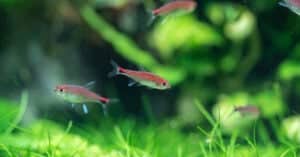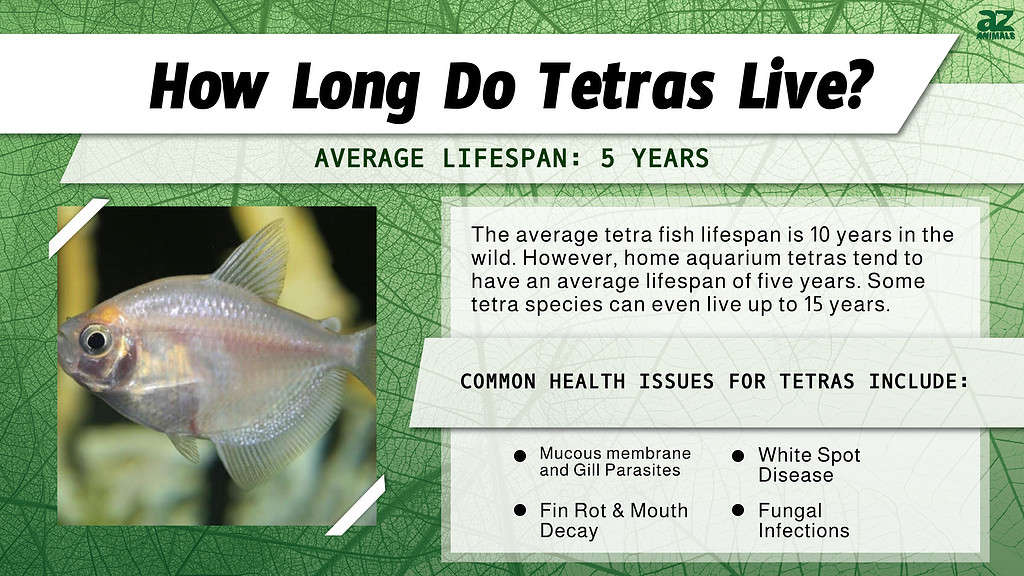
The tetra fish is known for being one of the most colorful schooling fish species. With many colors to choose from, you’ll never get bored having them swim happily in a tank. However, one aspect to consider before purchasing one of these beautiful fish is determining how long tetras live.
This answer might be confusing, as tetra fish in captivity tend to live a different length than those in the wild. So, that’s why you must be careful which answer you’re referring to. Below, we’ll explain how long tetras live, their lifespan, and how to ensure they stay healthy.
The Rundown on Tetra Fish
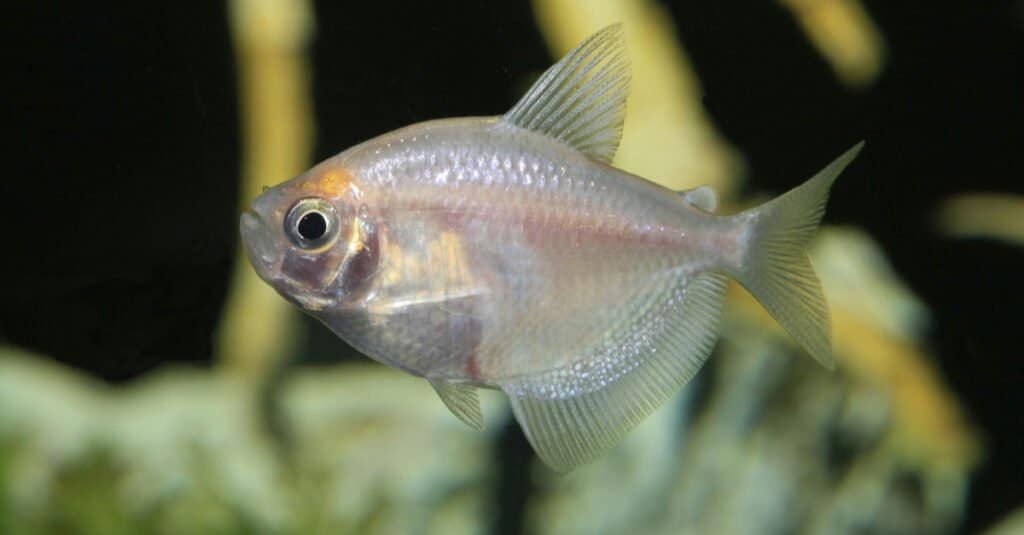
Tropical freshwater fish of the Characidae family are tetras.
©Steve Bower/Shutterstock.com
The term “tetra” doesn’t refer to a specific type of fish but rather is a general name for tropical freshwater fish belonging to the Characidae family. Many types of fish fall into this category, and many are bright colors like yellow, green, and blue.
Tetras are normally found surrounding the Americas and Africa, with a majority of them living in the Amazon Basin and river systems located in South America. This small fish can survive in waters with temperatures between 68 to 82 Fahrenheit. Hence it is a tropical breed of fish.
The tetra is known for being the world’s most popular aquarium fish due to its non-aggressive nature. The small fish thrives in saltwater, making them a good choice for saltwater aquariums. Not only does their temperament make them popular, but also their looks. Most tetras boast bright, vibrant colors, with some even neon.
The Average Tetra Fish Lifespan
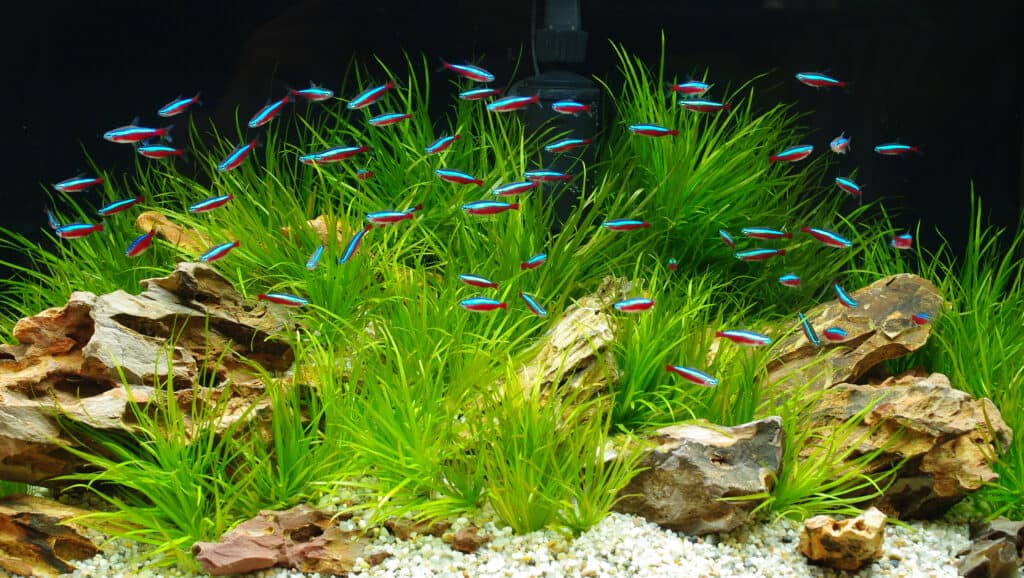
In the wild, tetras can reach up to 10 years old, and even 15 for some species. They live shorter lives in captivity.
©Dobermaraner/Shutterstock.com
The average tetra fish lifespan is 10 years in the wild. However, home aquarium tetras tend to have an average lifespan of five years. Since tetra fish aren’t all of the same species, some can even live to 15 years.
Captive tetras tend to have shorter lives than those in nature. Generally, animals have the opposite reaction, but fish tend to do better in nature. Tetras don’t last as long in captivity due to the high levels of ammonia, nitrates, and nitrites.
A tank that isn’t cleaned frequently will have high levels of these chemicals. When that happens, a tetras lifespan is drastically reduced.
Another reason tetras don’t last as long in captivity is that the fish is easily stressed. A tetra fish is extremely fragile, often contracting an infection and dying. So, it’s best to understand the care a tetra will need to see it thrive.
Tetra Fish Life Cycle Explained
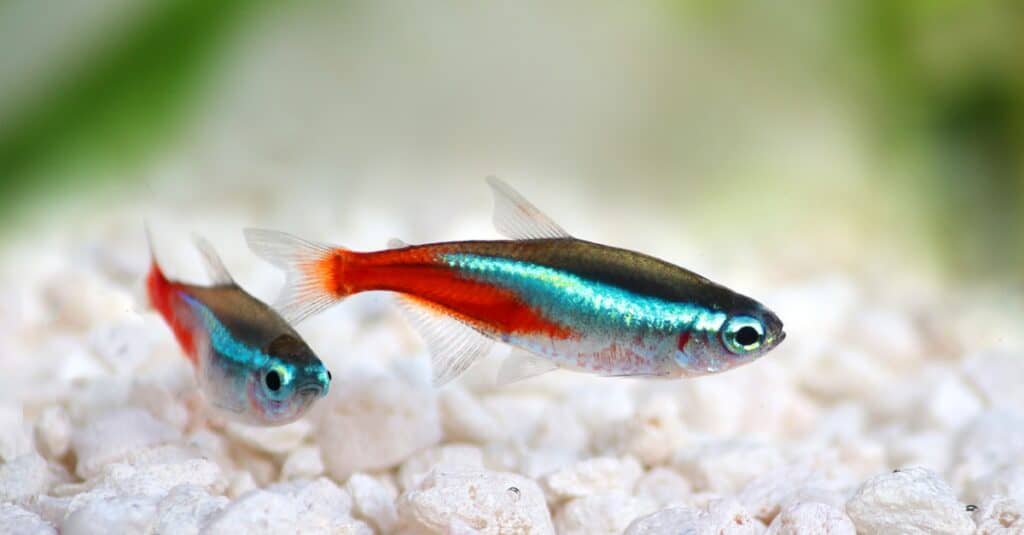
Like all fish, tetras will go through several separate life stages before reaching adulthood.
©iStock.com/Mirko_Rosenau
Now that we have a better idea of the average tetra’s lifespan, we should take a look at its lifecycle. A tetra doesn’t just hatch and become a fully grown adult. Instead, several stages have to happen before that. So, let’s take a closer look!
Stage 1: The Spawning Stage (0-12 Weeks)
Fish don’t produce babies the same way that other mammals do. Instead, they tend to lay eggs, which is called spawning. A female tetra will lay around 100-150 eggs at the bottom of the tank. It will take around 12 weeks from there before the baby fish spawn.
Stage 2: After Spawning Stage (12-14 Weeks)
Once the eggs are hatched, you can expect only about a third of the fish to turn into fry. The others will pass away due to ammonia, weak immune systems, and other health-related issues. The weaker ones will not even hatch.
The baby tetras that do hatch will end up in a larval stage and will stay that way for two weeks. During this time, the small fish will feed off of the yolk from the mother. The larvae will eat independently and begin to grow into fry.
Stage 3: The Fry Stage (14 Weeks+)
After the spawning stage, the tetra fish will turn into fry. A fry is a small fish that is no longer a baby but a toddler. These small fish are very hard to see with the naked eye.
At this stage, the fry will hide in plants and need feeding. They will need infusoria two to three times daily to help them grow. During this time, you can see them float around to come to eat the food.
After a few days, the fry will switch from eating infusoria to small baby brine shrimp or other fish food. Once five days have passed, the fry will start to swim around the aquarium.
Stage 4: Adult Tetra Stage (8-12 Months)
The tetra fish generally reaches maturity at eight to twelve months. At adult size, the tetra fish will be 1.5 to 2 inches. Since tetra fish have so many different subspecies, it’s hard to say the exact time when they reach full maturity.
How to Ensure Your Tetra Fish Live a Long Life
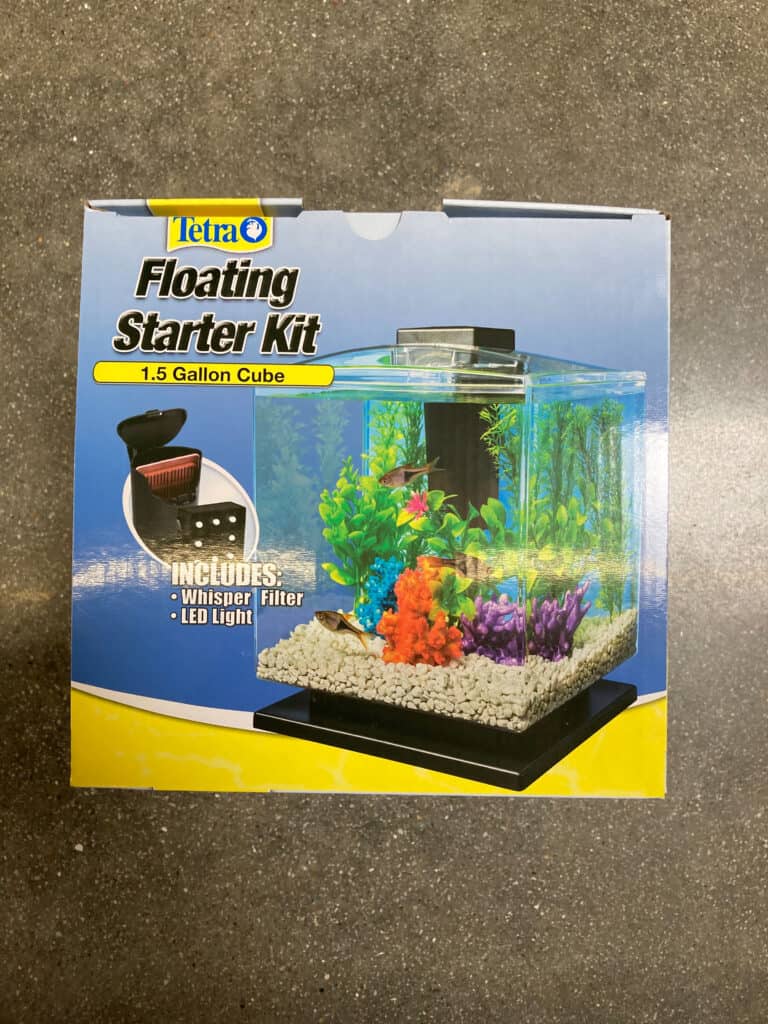
So, how long do tetras live? On average, tetra fish can live up to five years in captivity. However, that estimate is based on a few factors the owner can improve. To ensure your tetra lives a long life, consider the following.
Maintain Proper Water Conditions
Tetra fish thrive in water temperatures between 70-81 degrees Fahrenheit. Never switch the temperature overnight, as this can stress your fish out. Instead, gradually build the temperature up so your fish can be comfortable.
Cleaning and Filtering the Tank Regularly
At a minimum, you should change 1/4th of the water from the take weekly. Filtering out small amounts of water can help keep the tank free from debris and chemicals. Cleaning out the entire tank every two weeks is also recommended to help prevent build-up.
Also, ensure to cycle the water adequately while not dechlorinating it. Doing it slowly can help filter the tank without interrupting your fish’s stress levels. In addition, the hardness should be kept under ten dGH and pH below 7 with a nitrate level between 0-40 ppm.
Have the Correct Lighting
Lighting might not seem important, but some fish species require certain lighting conditions to be happy. tetra fish thrive in tanks that have minimal lighting. The tank should have a day and night cycle and have LED soft lighting.
Feeding Them Quality Food
Tetra fish are omnivores and require specific food to thrive. Brine shrimp is one of the best foods they thrive on. However, you can use fish flakes and daphnia if you can’t find those. Some aquarium owners even get bloodworms and live worms, as they have multiple species requiring live foods.
Feeding should be kept minimal, and enough food should be given to only last three minutes. That way, there isn’t any tank debris, and the fish don’t fight over the leftovers at a later time.
Compatible Tank Mates
Fish that are non-aggressive are recommended to be tank mates for tetra fish. Tetras are easily scared and often will become stressed if sharing space with predatory fish. Make sure you put them with other fish species that dwell in other areas of the tank. This includes bottom dwellers and top-dwelling fish.
Including More than One Tetra
Tetra are schooling fish and don’t enjoy being alone. They are happy with other tetras, especially if there are more than six in a group.
Make Slow Adjustments
One factor that aquarium owners don’t factor in is how fast they change the tank. Many fish species besides the tetra don’t do well with change. Small fish can easily die from shock and extreme changes to their environment.
Any time you introduce new fish to the tank, change pH levels or place new decorations, be sure to do it over time. This way, your tetra fish have time to slowly adjust to any changes without feeling tense and shocked.
The photo featured at the top of this post is © NattapolStudiO/Shutterstock.com
Thank you for reading! Have some feedback for us? Contact the AZ Animals editorial team.




